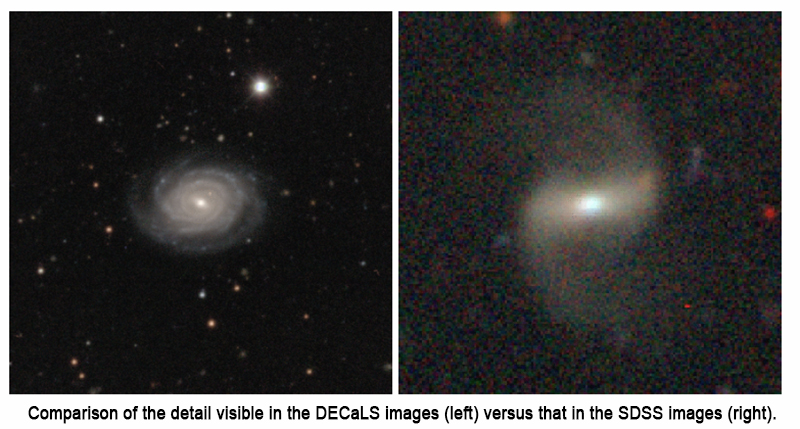Last month in our Comet Hunter article we talked about some of the opportunities for we astronomy buffs to contribute to some real science projects by becoming citizen scientists for NASA and other organizations. Today I’d like to highlight one of my favorite projects, Zooniverse’s Galaxy Zoo. If you’re good at distinguishing subtle shapes and faint features in fuzzy blobs, then this may just be the project for you!
More than one million folks worldwide have contributed to people-powered research projects offered by Zooniverse. One need not have any specialized training or knowledge to become a part of the Galaxy Zoo team, just the ability to access the Galaxy Zoo website and have a decent computer monitor with a good enough view of the galaxy images to make some feature determinations.
Today’s Galaxy Zoo is a spin off from a galaxy classification project initiated by the Sloan Digital Sky Survey (SDSS) team back in 2007. The SDSS dataset was huge – it contained images of over 100 million galaxies – and would have taken the team scientists alone far too long to sift through. Then they had the idea to engage the public in sifting through the data with hopes of relieving the project scientists from doing some of the more straightforward galaxy classification work. They were pleasantly surprised at the result; over 50 million galaxy classifications were submitted by the 150,000 citizen scientists working on the project in the first year. This meant that each galaxy in the survey had classifications submitted by multiple individuals, which was the perfect measuring stick to determine the accuracy of the classification – majority rules.
Since that first round over a decade ago that focused on SDSS data only, the project has included data from a myriad of sources, from the Hubble Space Telescope to the UK Infrared Telescope. The current iteration of the project contains data from the Dark Energy Camera Legacy Survey (DECaLS). DECaLS is ten times more sensitive to light than that the SDSS instruments were, so the current images contain much more detail than the first images did.

Similar to the NASA Citizen Science Projects, the Zooniverse offers projects in many scientific disciplines beyond astronomy. If Galaxy Zoo doesn’t sound like the right project for you, check out the Zooniverse project page as well as our Comet Hunter article for other ideas on how to take part in some cutting edge research and contribute to real scientific discoveries.
M. Colleen Gino, MRO Assistant Director of Outreach and Communications
